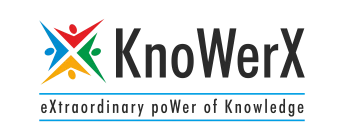Best Practices for Streamlining Your Demand Planning Process

Best Practices for Streamlining Demand Planning Process in Supply Chain Management In the complex world of supply chain management, the demand planning process is a critical component that ensures the right products are available at the right time to meet customer needs. An effective demand planning can significantly enhance a company’s efficiency, reduce costs, and improve overall customer satisfaction. This article aims to explore the best practices for streamlining your demand planning process, helping businesses achieve greater accuracy and efficiency in their operations. Understanding Demand Planning The demand planning process is a multifaceted approach that involves forecasting customer demand to ensure that products can be delivered efficiently and effectively. It includes several key components such as statistical forecasting, inventory management, and collaboration across different departments. Accurate demand planning is essential for maintaining optimal inventory levels, minimizing excess stock, and avoiding stockouts, which can lead to lost sales and dissatisfied customers. Best Practices for Streamlining Demand Planning Implement Advanced Forecasting Techniques Advanced forecasting techniques are vital for enhancing the accuracy of demand predictions. Utilizing statistical models, machine learning algorithms, and data analytics can help businesses forecast demand more precisely. These techniques allow companies to analyse historical data, identify patterns, and predict future demand trends. For instance, machine learning can uncover complex relationships in data that traditional methods might miss. Ensuring the accuracy of the data used for forecasting is crucial; clean, comprehensive data leads to better predictions and, consequently, a more efficient demand planning process. Integrate Technology Solutions In today’s digital age, integrating technology solutions into the demand planning process is indispensable. Demand planning software and Enterprise Resource Planning (ERP) systems can automate various aspects of the process, providing real-time data and enhancing decision-making. These systems can aggregate data from multiple sources, streamline data processing, and offer advanced analytical tools. Real-time data integration ensures that all departments are working with the most current information, facilitating a more accurate demand planning process. Automation reduces the risk of human error and allows planners to focus on strategic decision-making rather than manual data entry. Collaborate Across Departments Effective demand planning requires cross-functional collaboration among various departments such as sales, marketing, finance, and operations. Aligning goals and sharing information across these departments can significantly improve the accuracy of demand forecasts. For example, marketing can provide insights into upcoming promotions that may affect demand, while sales can offer information about customer trends and preferences. Regular meetings and communication channels can help ensure that all departments are on the same page and working towards common objectives. Collaboration fosters a holistic approach to the demand planning process, where all relevant factors are considered, leading to more reliable forecasts. Common Challenges and How to Overcome Them Despite the benefits, the demand planning process is not without its challenges. Common obstacles include data inaccuracies, siloed departments, and resistance to change. To overcome these challenges, businesses should invest in high-quality data management practices, foster a culture of collaboration, and provide training to employees on new tools and techniques. Addressing these issues proactively can pave the way for a more streamlined and effective demand planning process. Case Study Example Consider the example of a mid-sized retail company that successfully streamlined its demand planning process by implementing advanced forecasting techniques and integrating a sophisticated ERP system. The company also fostered a culture of collaboration by establishing regular cross-departmental meetings. As a result, they achieved a significant reduction in inventory costs and improved their service levels, demonstrating the tangible benefits of following best practices in the demand planning process. FAQs: Frequently Asked Questions End Notes At KnoWerX, we understand that streamlining the demand planning process is crucial for success in supply chain management. By adopting advanced forecasting techniques, integrating cutting-edge technology solutions, and fostering cross-departmental collaboration, businesses can significantly enhance the accuracy of their demand forecasts, reduce costs, and improve overall efficiency. Addressing common challenges and learning from successful case studies are key steps in refining demand planning processes. Implementing these strategies is essential for companies to stay competitive in today’s dynamic market environment. Image Reference: Freepik Disclaimer: All trademarks, logos, and brand names are the property of their respective owners. All company, product, and service names used in this website are for identification purposes only. Use of these names, trademarks, and brands does not imply endorsement.
